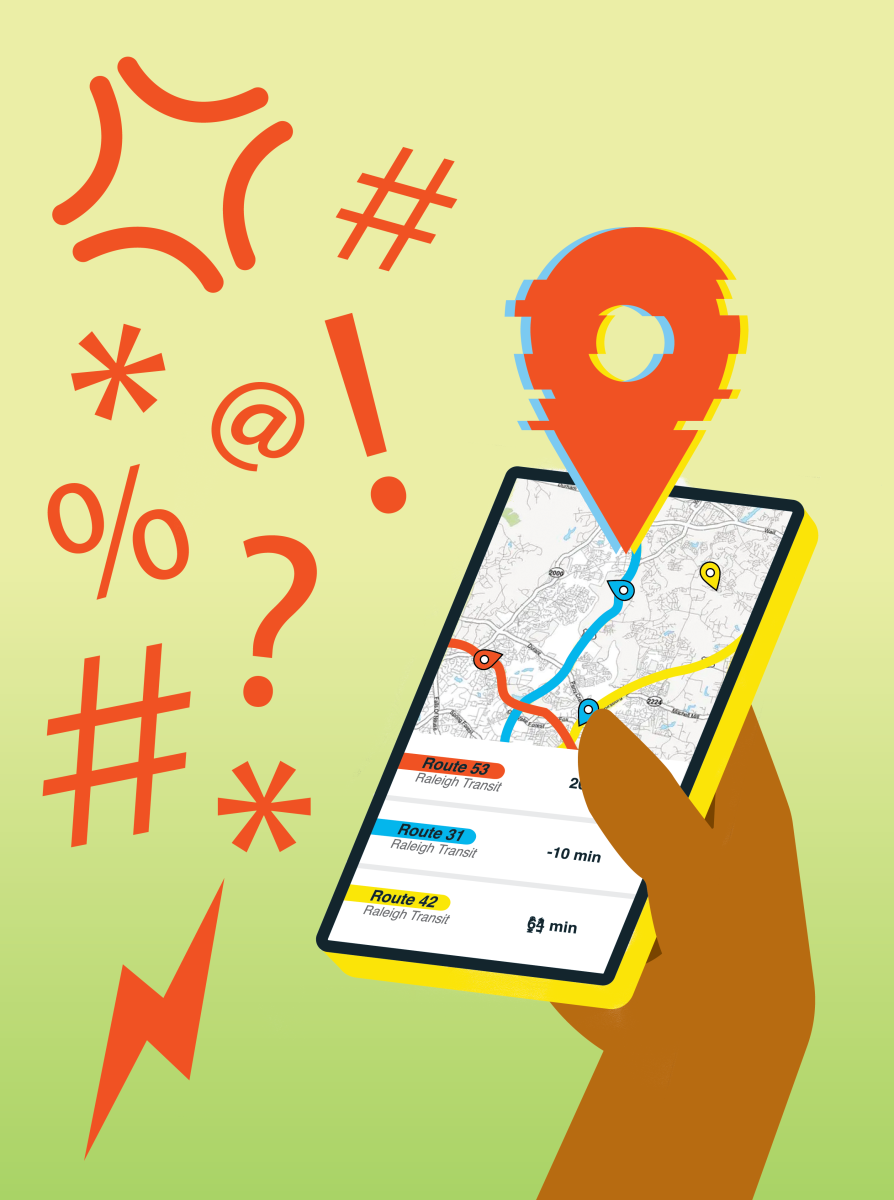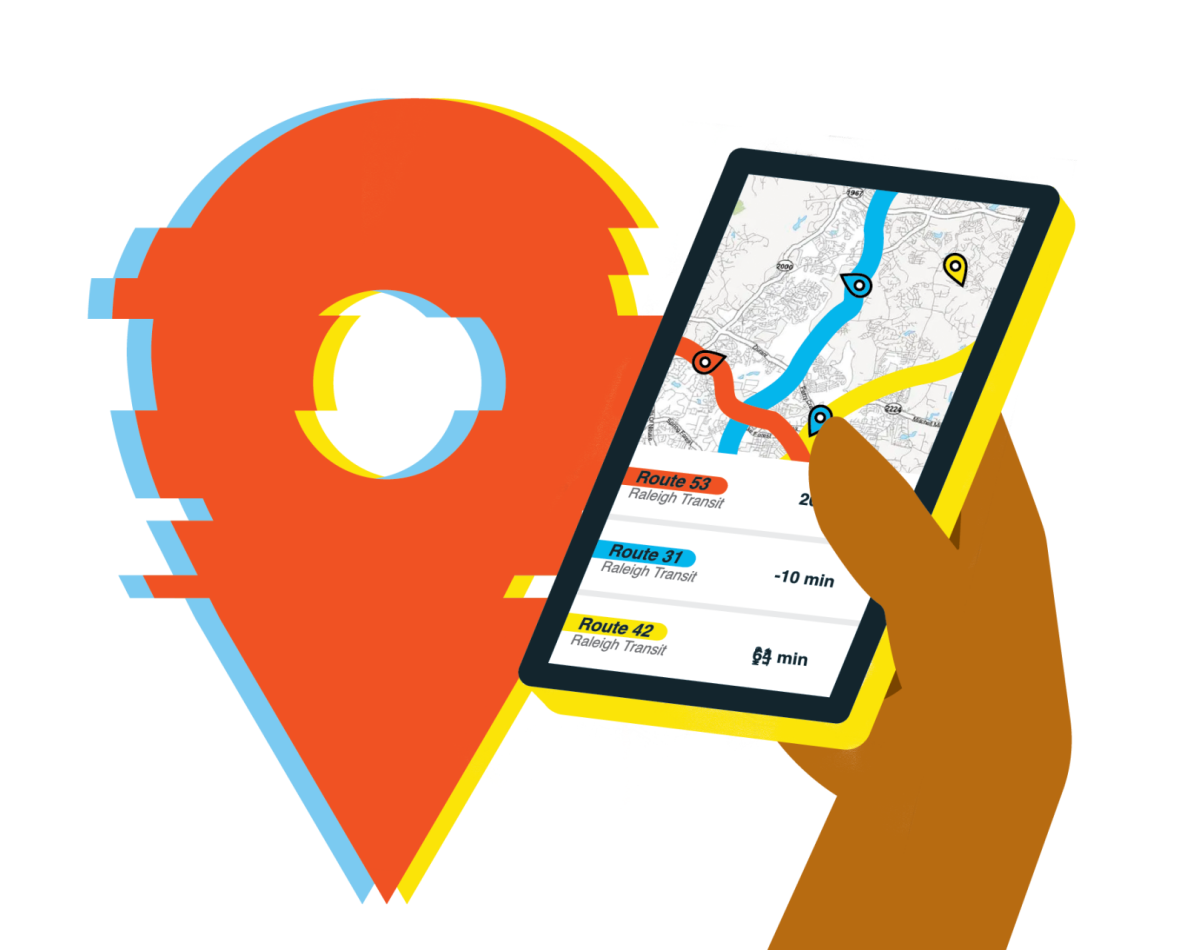The public transport situation in and around downtown Raleigh is the bane of every non-driver’s existence. While places near the downtown areas of cities like Charlotte and Raleigh have a better public transportation system, once you are closer to NC State’s campus, getting anywhere without a car is next to impossible.
NC State was recently named one of the “Best Universities for Commuters,” an accolade that doesn’t surprise us but doesn’t say much about Raleigh’s care for pedestrians or disabled commuters. Although the University does provide students, staff and faculty with a number of alternative transportation options, the bulk of those rely on a car or van. The options which don’t — walking, biking, local transit, Lime scooters — have numerous problems that are yet to be fixed.
Take the Wolfline, for example. Between staff shortages, never-ending construction causing convoluted routes and TransLoc, a largely ineffective app, sometimes it’s just easier to suck it up and make the 30-minute trek to class. Don’t get us wrong — we have utmost respect for the bus drivers who shuttle around hundreds of college students on a daily basis — but the problems which exist outside of staff shortages are impossible to ignore. TransLoc’s predecessor, Rider, was much preferred by students and limited several of the problems students have with Transloc today — misnamed routes, glitches, inaccurate stop times and the like.
GoRaleigh isn’t much better, either. With its schedules governed by the same horrific app, bus stops are still a half-hour to an hour apart for the bulk of the routes. There are a few exceptions here and there, but nothing that’s close to campus. Plus, there are only a few GoTriangle routes that actually reach campus — for example, the Avent Ferry/Buck Jones Connector, which can only really take you as far as Athens Drive High School and Tryon Road, a mere eight-minute drive for those with cars.
Let’s say you decide to walk or bike downtown instead of trying your luck with Wolfline and GoRaleigh. Even if you’re up for the half-hour, miles-long trek into the heart of downtown Raleigh, you’re likely to run into construction along the way. Whether it be NC State’s “Power Forward” upgrade or a hint of scaffolding outside a high-rise, it’s oftentimes unclear where pedestrians are meant to go in lieu of their normal route. Furthermore, that alternative passage can be littered with construction leftovers — glass, broken pavement and other odd components — which can be merely inconvenient for abled commuters, but downright dangerous for those who use a wheelchair to get around.
One popular area with very few extended crosswalks is the intersections of Avent Ferry near Trailwood Drive and Varsity Drive. If you drive to campus from an off-campus apartment on a daily basis, the discrepancies of this road are all too common. There aren’t only terrible sidewalks, but also extreme potholes and no defined or clear bike lanes. Every time we drive down Avent Ferry Road, there are many pedestrians who rush across the street against oncoming traffic — in which they have no choice. There are only crosswalks at the stoplights and many students and pedestrians use them efficiently; however, there are not crosswalks everywhere, and not all drivers are cooperative in stopping for pedestrians.
It doesn’t help much either that downtown Raleigh’s R-Line has been temporarily suspended, or that Lime scooters are dangerous, expensive and fail to work half the time anyway, cutting off the two remaining transportation options for pedestrians and commuters. But these were never concrete solutions to begin with — without a safe, reliable public transit system and accessible options for pedestrians walking to and from their destinations, we can hardly call Raleigh a metropolitan area which thrives on public transportation.
Granted, any sort of permanent fix will take decades to implement, if not longer. A comprehensive state rail plan was unveiled by the North Carolina Department of Transportation (NCDOT) in 2015, but we’ve yet to see the effects of that really take hold.
That being said, there’s plenty that can be done in the short-term to optimize Raleigh’s public transportation accessibility on a small scale. At a school where the number of engineers and computer scientists is ever-increasing, we think somebody can finally code an app that’s much easier to use. Even if the improvements come from an organization outside of NC State, there’s plenty to be done: improving location accuracy and enhancing the UI design across the board, to name a few. This isn’t an NC State-specific issue, either — TransLoc inconveniences students across the country. An update is sorely needed.
Finally, there’s plenty the city of Raleigh and NCDOT can do to aid pedestrians who get around with a wheelchair. Potholes and broken pavement on the sidewalks and in between intersections should be fixed before minor bumps in the road, that’s not too much to ask for. A driver can oftentimes swerve to avoid the possibility of damaging their tires, but wheelchair users are subject to much more damage when approaching a large slab of cracked pavement or a curb with no ramp to get onto the sidewalk.
Public transit in and around Raleigh is absolutely appalling for those who don’t have access to their own car — which, sadly, is pretty much a luxury given the state of the car market today. Just because public transit is in a worse state in several metropolitan areas doesn’t mean Raleigh gets away scot-free. Sporadic bus schedules, hefty construction and shoddy sidewalk fixes aren’t nearly enough. NCDOT, do better.















